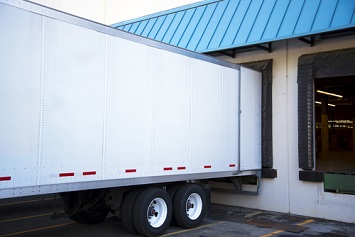Both longstanding and emerging motor carrier safety issues will continue to concern federal officials along with commercial drivers, motor carriers, and other stakeholders into 2020.
Current top issues include:
- Status of changes to the hours of service regulations proposed August 22;
- Expiration of the “grandfathered” exemption for Automatic Onboard Recording Devices in the Electronic Logging Devices mandate;
- Implementation of the Commercial Driver’s License Drug and Alcohol Clearinghouse; and
- Remaining rulemakings mandated by the Moving Ahead for Progress in the 21st Century (MAP-21) Act and Fixing America’s Surface Transportation (FAST) Act;
The Department of Transportation’s Office of the Inspector General (OIG) has four open recommendations for the Federal Motor Carrier Safety Administration (FMCSA), including three mentioned in the OIG’s “DOT’s Fiscal Year 2020 Top Management Challenges” report.
Both commercial drivers and motor carriers noted driver delay/detention at customers’ facilities, the ELD mandate, and hours of service as top concerns in a survey recently conducted by the American Transportation Research Institute (ATRI), a non-profit industry research organization. Drivers also are concerned about truck parking. Motor carriers’ top two concerns are driver shortages and driver retention.
Hours of Service
On August 22, the FMCSA published its long-awaited notice of proposed rulemaking to amend its hours of service regulations for commercial long-haul and short-haul drivers. The agency accepted comments through October 7. It has announced no further actions.
Proposed changes included:
- Allowing long-haul drivers to take a 30-minute on-duty break after 8 hours of driving rather than requiring an off-duty break;
- Allowing long-haul drivers to take one 30-minute to 3-hour off-duty break, pausing drivers’ 14-hour on-duty window;
- Allowing long-haul drivers to split their required 10-hour off-duty break into two periods—one of a least 7 consecutive hours in a sleeper berth and another of a least 2 consecutive hours either in the sleeper berth or off duty;
- Extending the driving window for short-haul operations from 12 to 14 hours and the distance from 100 to 150 miles; and
- Extending by the maximum window for driving in adverse conditions by 2 hours.
FMCSA received over 2,700 comments on the proposal. The National Safety Council (NSC) called for the agency to reject the proposed changes and retain the existing hours of service rules.
The proposed changes would have a direct impact on driving safety, NSC President and CEO Lorraine M. Martin told the agency in comments on the proposal. There has been a 45 percent increase since 2009 in the number of large trucks involved in fatal crashes, Martin noted in her comments. While large trucks account for 4 percent of the registered vehicles, they account for 9 percent of the fatal crashes, according to NSC.
The group specifically objected to the 30-minute to 3-hour pause in the 14-hour on-duty window. NSC cited research that the longer a person is on duty, the more likely it is that they will make a safety-critical error.
Delay/Detention, Parking
Delays at customers’ facilities and a lack of truck parking directly affect drivers’ hours of service. Drivers continue to have concerns about the availability of parking. Both drivers and motor carriers expressed concerns about delays and detention.
Drivers reported the majority of their pick-ups and deliveries were delayed due to customer actions, according to ATRI. Time spent looking for truck parking also adds to the number of hours drivers spend behind the wheel.
Mandates of the FAST Act include addressing delay and detention issues. The act required the DOT’s OIG to issue a report on driver delays and FMCSA to issue a data collection rulemaking.
The OIG completed its report, and FMCSA is involved in stakeholder engagement following the OIG’s findings. The OIG conducted an audit to assess available data on delays in motor carrier loading and unloading and examine ways to measure the potential effects of loading and unloading delays.
The OIG found that accurate industrywide data do not exist. Any available electronic data cannot discern between detention time and legitimate loading and unloading. The OIG did estimate that a 15-minute increase in time spent at a customer’s facility increases the average expected crash rate by 6.2 percent. It also estimated that detention results in annual earnings reductions for long-haul truckload drivers of $1.1 billion to $1.3 billion.
The OIG also concluded FMCSA’s data collection plans would not accurately capture information about the delays experienced by drivers, limiting the value of any analysis. The agency concurred that it needed to improve its plans for a data collection rulemaking.
Open OIG Recommendations
Determining the impact of driver detention is just one of the three top management challenges for FMCSA in 2020, according to the Transportation Department’s OIG. FMCSA’s other top challenges are ensuring commercial drivers are qualified and prioritizing motor carriers for safety and compliance interventions.
Unqualified commercial drivers are on America’s roads, according to the OIG. There are weaknesses in the timely sharing of information between states about drivers’ traffic violations. While each state issues its own Commercial Driver’s Licenses (CDLs), states are required to share information about traffic violations.
The OIG cited one instance of the breakdown—a case of driver with a Massachusetts CDL arrested in Connecticut for operating under the influence who was involved in a fatal crash in New Hampshire 6 weeks later. The Massachusetts Registry of Motor Vehicles had not performed a timely review of out-of-state violations, the OIG found.
FMCSA also needs to address problems with commercial drivers’ qualifications, including medical certificates. The OIG found several instances of fraud committed by medical doctors, as well as driving schools, state department of motor vehicles’ examiners, and third-party examiners.
FMCSA also continues to face challenges in prioritizing high-risk motor carriers for intervention. The agency’s current Compliance, Safety, and Accountability (CSA) program consists of a Safety Measurement System (SMS), intervention process, and safety determinations to identify motor carriers not fit to operation commercial motor vehicles.
The FAST Act directed FMCSA to commission a National Academy of Sciences (NAS) study of the methodology and data the agency uses to identify carriers that are not fit to operate commercial motor vehicles. The act also mandated that FMCSA develop a corrective action plan in response to NAS’s recommendations.
FMCSA determined that the types of data NAS recommended it collect do not exist and the agency no longer plans to collect additional data. The OIG concluded FMCSA plans to make its rankings more transparent lacked details on costs, implementation, and ways to make agency CSA data more user-friendly.
FMSCA needs to improve its corrective action plan to address recommendations in the NAS study, according to the OIG.

Clearinghouse, ELD Mandate
Two FMCSA endeavors are coming online before the new year—registration for the agency’s drug and alcohol clearinghouse and full implementation of the Electronic Logging Device (ELD) mandate.
The agency has begun accepting registrations for its Commercial Driver’s License Drug and Alcohol Clearinghouse. The database goes live January 6, 2020.
The “grandfather” clause for Automatic Onboard Recording Devices (AOBRDs) in the ELD mandate runs out on December 16, 2019. After that date, motor carriers and their drivers must use ELDs.
ELDs capture more data and more accurately record locations than AOBRDs. Events automatically recorded by ELDs cannot be changed, only annotated; and ELDs record who makes edits to device data. AOBRDs allow driving time data to be edited if attributed to the wrong driver. Driving time data cannot be edited on ELDs. FMCSA officials reiterated this fall that the December 16 deadline would not be extended.
The drug and alcohol clearinghouse will provide FMCSA, as well as, employers, state driver licensing agencies, and state law-enforcement personnel with a secure online database containing real-time information about commercial driver’s license (CDL) and commercial learner’s permit (CLP) holders’ drug and alcohol program violations. Information in the database will include positive drug or alcohol test results and test refusals along with records of drivers’ return-to-duty and follow-up testing plans.
Drivers are not required to register unless they want to view information in their own clearinghouse records. They must provide electronic consent for current or prospective employers to conduct a query of drivers’ clearinghouse records. Employers will be required to conduct preemployment and annual queries for all drivers subject to drug and alcohol testing.
Driver Shortage?
A shortage of commercial motor vehicle drivers and driver retention are concerns often cited by motor carriers in ATRI’s annual industry survey. The Labor Department’s Bureau of Labor Statistics (BLS) looked at the issue in March.
BLS economists concluded the market for truck drivers is similar to the market for other blue-collar occupations. The turnover rate at large truckload motor carriers is 94 percent because current and potential employees find the compensation and hours of long-distance truck driving unappealing. Having to compete on costs, however, limits motor carriers’ ability to raise compensation.
Conclusions
Longstanding issues and developments in 2019 will remain concerns for motor carriers and their drivers into 2020. FMCSA must address safety concerns raised by its proposed relaxation of its hours of service regulations. Motor carriers and drivers will need to adjust to full implementation of the ELD mandate and availability of the CDL Drug and Alcohol Clearinghouse. Stakeholders are waiting for the agency to address longstanding issues like its handling of Compliance, Safety, and Accountability; concerns about driver delay/detention at customers’ facilities and availability of truck parking.


